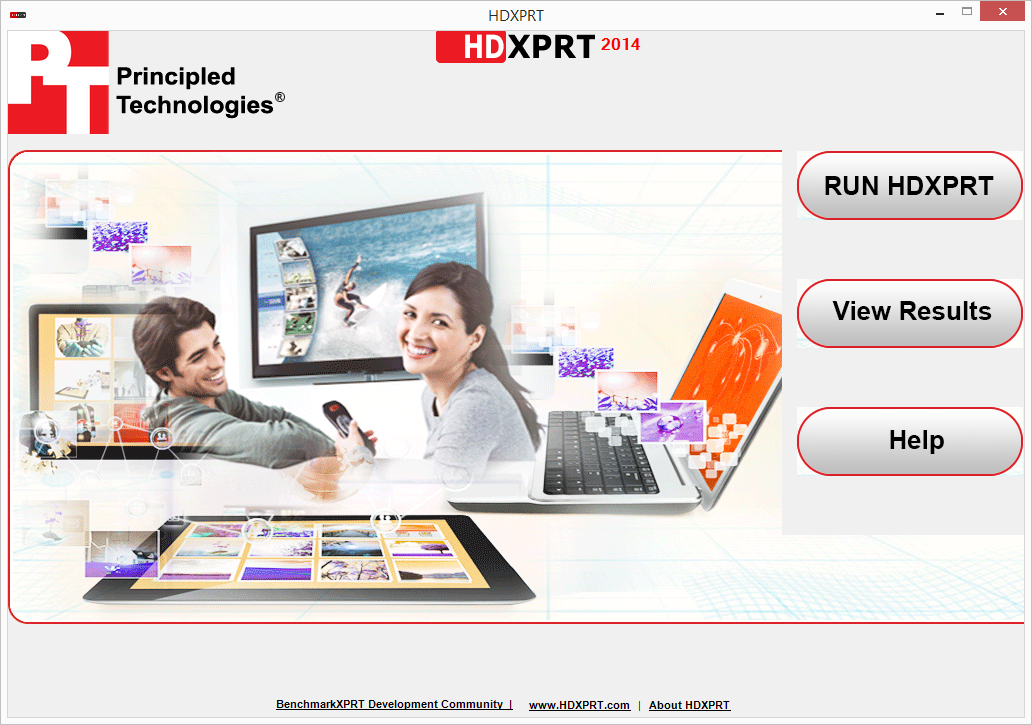Two weeks ago, I began explaining how benchmarks keep score (http://www.hdxprt.com/blog/2011/08/17/keeping-score/). HDXPRT 2011 fundamentally measures the time a PC required to complete a series of tasks, such as editing photos and converting videos from one format to another. It uses the times of three sets of tasks to come up with three use case times (Edit videos from your camcorder, Create memories from your digital camera, and Prepare media for on-the-go). Because an early version of the benchmark took too long to run, we trimmed the size of the workloads (such as the number of photos) to make it complete more quickly. Because we believed the size of the original workloads was realistic, we extrapolated (multiplied by the difference in size) what the time would have been. That process results in times in minutes.
We could have simply combined the three times into one total time, but doing so would have created a score where smaller is better, which can be confusing. To avoid this, HDXPRT 2011 normalizes the three times to the times a calibration, or base, system required to complete the same work. The benchmark then calculates a geometric mean of those three normalized scores and multiplies that number by 100 to create the overall Create HD Score. This scoring method sets the calibration system’s score to 100 and makes it easy for you to compare multiple systems. For example, if PC A gets a score of 200, and PC B gets a 400, PC B is twice the speed of PC A (and four times the speed of the calibration system) at creating HD content.
The term “geometric mean” might be unfamiliar. One way to get benchmark geeks arguing is to ask about the correct mean for combining results. (Yes, there really are enough of us for an argument.) At the risk of inflaming my fellow benchmark geeks, I will give a quick summary of the main ways people combine results.
An arithmetic mean is a simple average, where you add all the numbers and divide by the number of numbers. It is good for combining amounts, such as gigabytes of RAM, across multiple computers.
A geometric mean is more mathematically complex. You compute it by multiplying all the numbers and then taking the nth root, where n is the number of numbers. This kind of mean is appropriate for combining normalized numbers. Its advantage over the arithmetic mean is that it keeps one really good number from drowning out all the others.
The final mean is the harmonic. You calculate it by dividing the number of numbers by the sum of 1 divided by the square of each element. (If that makes little sense to you, don’t worry about it!) The harmonic mean is appropriate for combining rates, such as megabytes per second.
I should also mention one other result from HDXPRT 2011, the Overall Play HD Experience score. This is a very different kind of score that uses one to five stars to indicate the quality of three HD video playbacks. HDXPRT uses mean opinion scores (MOS) based on smoothness of playback to compute these results. (I’ll discuss MOS in more detail in a future blog.) With this kind of score, a four-star rating is better than a two-star rating, but it is hard to say how much better. The MOS research indicates that people would rate the four-star playback as good and the two-star playback as poor, but you can’t say that one is twice as good as the other because the relationship is not linear.
What do you think of the metrics that HDXPRT 2011 provides? Are there others you would find more useful or meaningful? Your input is vital to improving the benchmark and making sure it does what you want it to do.
Bill
Comment on this post in the forums













